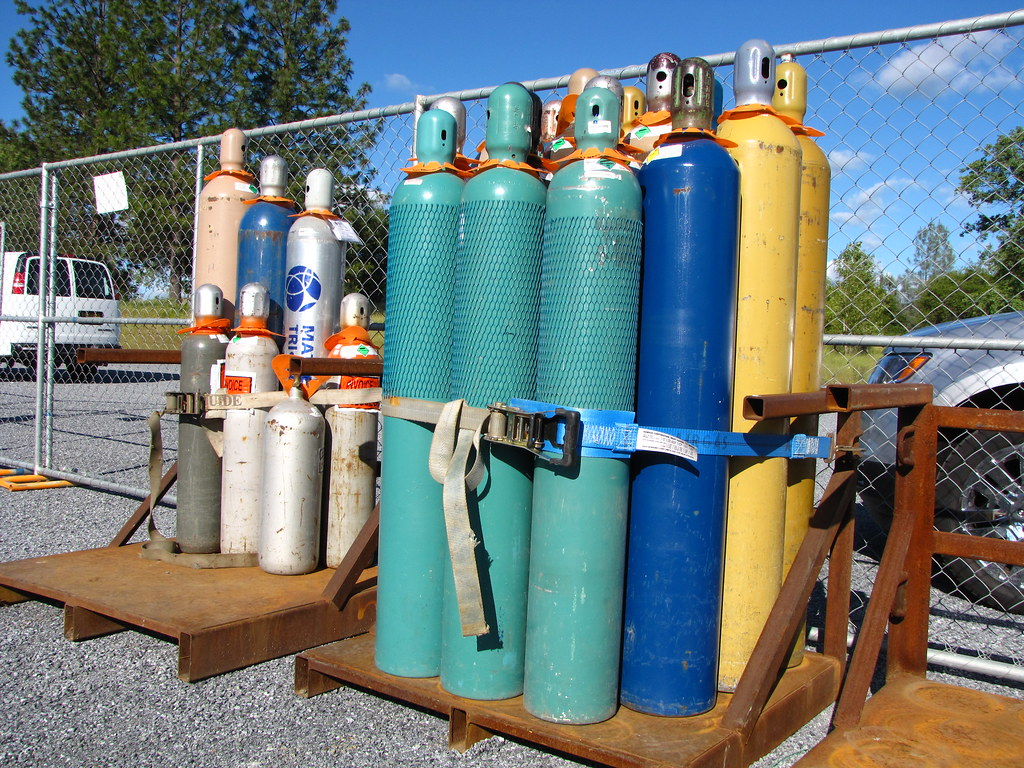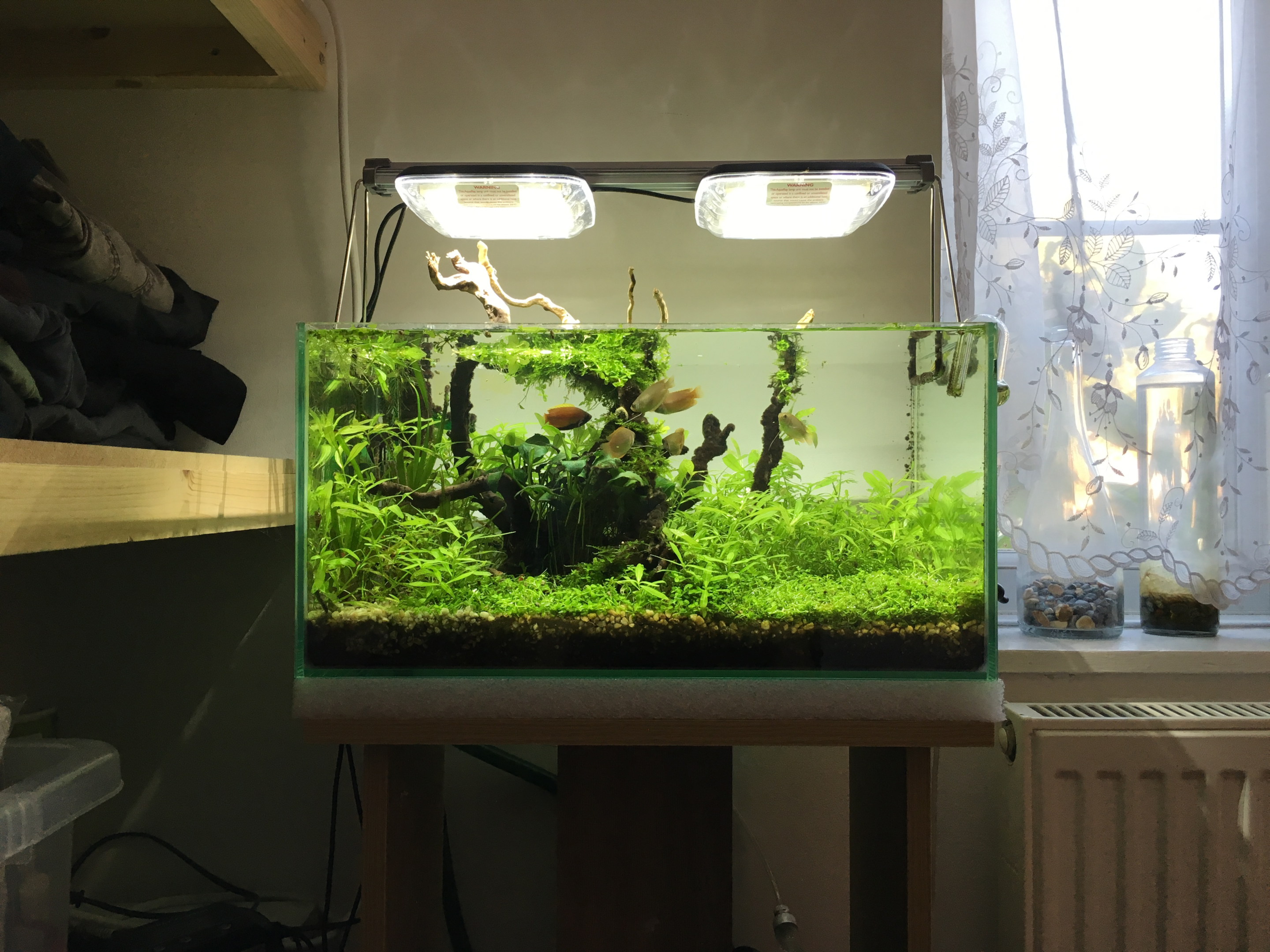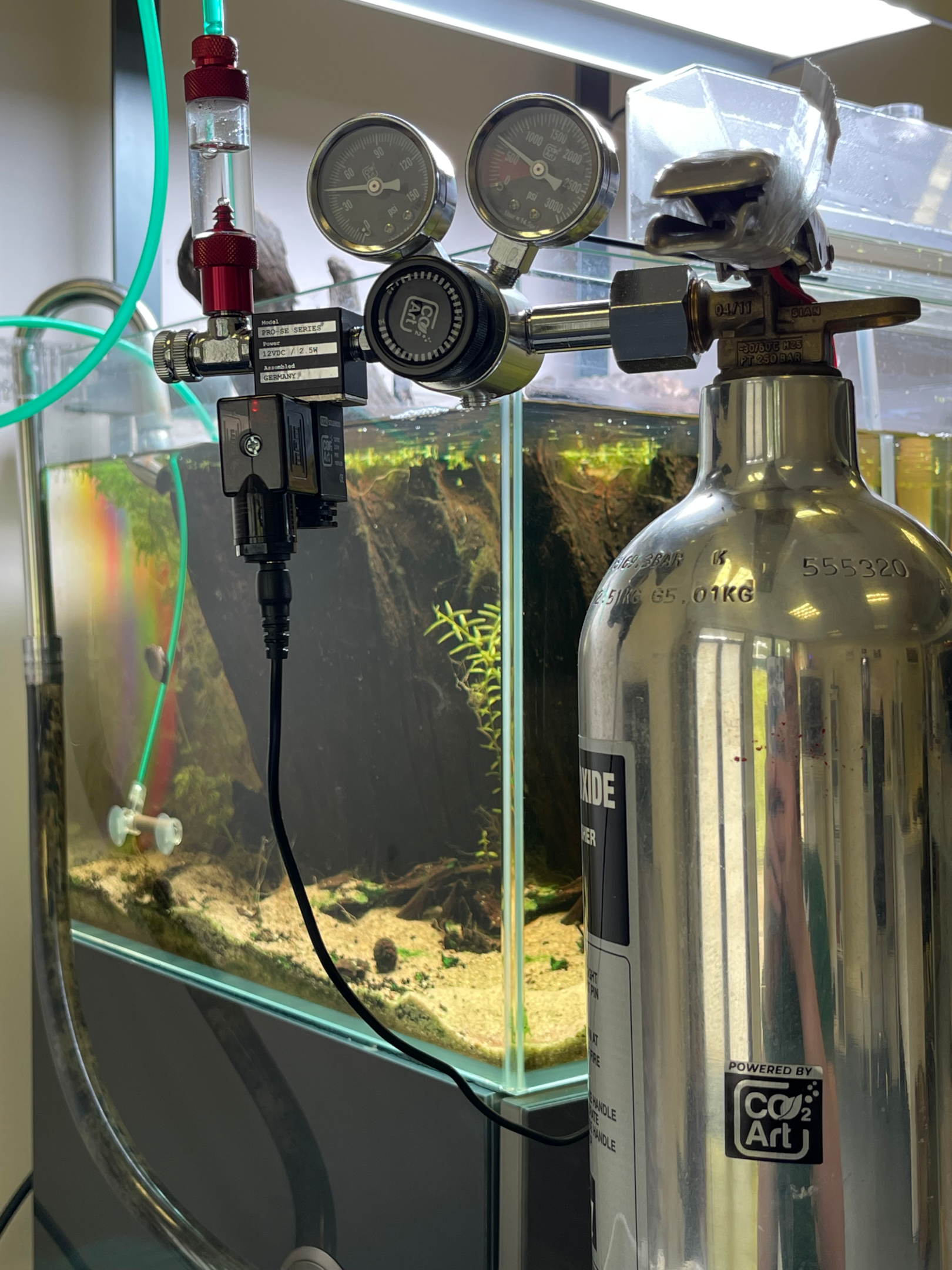Is CO2 Better Than Compressed Air?
Airstones and air pumps have been a staple of the aquarium trade for decades. Air Pumps have been and still are a huge help for bringing Oxygen into the water and this works wonders on aquarium water. A lot of hobbyists may be wondering: is co2 better than compressed air? Air Pumps (compressed air) have been essential for fish, especially for overstocked tanks. The question is; will it do the same for aquatic plants? Will it also dissolve CO2 into the water since CO2 is also present in the atmosphere? Let's start the fight: CO2 vs compressed air!

How do air pumps work?
Let us first understand how pumping air into the water helps with providing Oxygen to fish. Pumping air into the tank works in two ways. The first is it forces the air through the air stone dividing it into small bubbles. Smaller bubbles would mean there is a greater surface area that comes into contact with water and so has a greater chance of having some of the air dissolve in water. The amount of Oxygen dissolved would then depend on how strong the air pump being used is. Most of the air escapes back into the atmosphere and so the process continues for as long as the air is being pumped into the water. Some oxygen may get dissolved in the process and so the tank will never run out of gas.

Water agitation
The majority of the gas from the air stone will hurry upwards escaping from the water into the atmosphere. It would burst out of the water surface, agitating in the process. This surface agitation will also cause some of the air that will be in contact with the water surface to be dissolved. Some of the dissolved gasses in the water also escape into the atmosphere this way. This is called “gas exchange”. The most evident examples of this are rivers, waterfalls and of course the oceans. Oxygen and CO2 are abundant in these bodies of water where there is constant movement on the water’s surface. This can also be evident in gravity-fed filtration systems such as overhead filters, Hang on Back filters and waterfalls in ponds. Anything that agitates the water’s surface will be creating gas exchange. The stronger the agitation, the more gas exchange works.

Air is composed of 78% nitrogen, 21% Oxygen with the other 1% remaining are made up of other gasses such as Carbon Dioxide, Hydrogen, Methane and Neon. Carbon Dioxide only makes up about 0.4% of air. Majority of the air, Nitrogen and some other gasses do not get dissolved in water through air stones or gas exchange. This is what escapes back into the atmosphere from the airstone. This airstone process definitely will provide enough Oxygen for fish since air is made up of 21% Oxygen. A good percentage of Oxygen in the air being pumped into the tank will likely be dissolved in the water depending on some variables like water temperature ,water hardness and of course the power of the air pump.
How does CO2 dissolve in water?
CO2 will also be dissolved through gas exchange and through injecting air into the water via the air stone and air pump process, however, since CO2 is only .04% of air there is only very little CO2 that will come in. Bear in mind that gas exchange is a two-way process. Gas comes in and some gas gets out. There is very little CO2 le dissolved in the water with this process. It is definitely not enough for most plants. Some easy plants will tolerate low CO2 in the water column but it is with conditions. The light must not be intense in these tanks. The temperature must not go above 28 degrees Celsius as well. Tank water must not be hard water. Hard water has very little capacity to dissolve and store gasses.
How did scapers manage to grow plants without CO2 supplementation in the past?
This is actually the problem with the pioneers of the planted tank hobby in the 1960s and 70s. They did not even have this dilemma "compressed air vs CO2". There is too little CO2 in the tank water for the plants to thrive. The most common remedy for this before was water change. Frequent water changes would ensure there will be new dissolved CO2 with the new water coming in. It still was not enough though. Only old, established tanks were found to be a good environment for plants. New setups were dreaded in the planted tank hobby. They knew that a new setup is an uphill climb.
Back then, only a handful of stem plants, epiphytes and true aquatic plants were known. True aquatic plants do not transition from immersed to submersed form. They only have their submersed forms so cannot live above water. These plants are so well adapted in their aquatic environment that most of them would even thrive even if there is no surface agitation. They would thrive in low CO2 environments. All of it was about to change though.
Takashi Amano changed the aquascaping world!
Most plants found in the wild would not thrive in a planted tank. Some hobbyists accepted it for what it was and just focused on plants that they could grow successfully in the tanks and ponds. There were in fact really only a handful of varieties back then. That was until some Japanese experimented with carbonated water. The Japanese’s name was Takashi Amano- the father of modern-day aquascaping. The moment Takashi Amano perfected what he had discovered he found out that most plants found in marshes and waterways would thrive in a controlled environment with CO2 supplementation. Some marginal plants would show their beautiful submerged forms. Carpeting plants like Hemianthus Callitrichoides and Monte Carlo are popular only because of CO2 supplementation. There are a lot of plants he introduced to the hobby himself but all plants that we enjoy today, the ones that were previously thought of as impossible to grow in tanks were all because of him and the work he has done trying to develop CO2 supplementation. He revolutionized the aquarium industry in a very big way.
This is how CO2 supplementation works. Water has a certain capacity to dissolve gasses as we all already know. The process is to replace the air being pumped into the air stones with pure CO2, This ensures that enough CO2 can be dissolved in water provided that the tank parameters are right. It follows the same principle as with compressed air and air stones. The microbubbles being produced by atomizers and glass diffusers follow the same principle. They just made the bubbles near so there would be a lot of surface area to come in contact with water, therefore ensuring that the majority of the CO2 will be dissolved. It is just the same principle taken one step further.
How can I inject CO2 in practice?
CO2 can be injected with high pressure or low pressure. High pressure comes in CO2 tanks and Solenoid Valves. Low pressure can be the DIY CO2 generators using both Yeast/Sugar mixtures or the Citric acid/baking soda mix. There are benefits to using both ways but we leave the details for these in another article.
Multiple attempts have been made to supplement CO2 injection with liquid and tablet chemicals that would provide carbon in the water but pressurized CO2 injection still is the most stable and controllable of all the methods. It has been refined and new inventions have been created to guarantee close to 100% dissolution. Using CO2 nowadays is with minimum risk with the coming out of drop checkers and more durable solenoid valves to better control the rate of injection into the tank water. Of course there is the unavoidable accident and mishaps but those have been minimized.

How to source a CO2 tank?
You can look in your city for a company that sells compressed gases, typically they have a swap service for compressed carbon dioxide too, where you will swap the cylinder each time you need a refill. This could be a company like Airgas.
Alternatively, see if there is a fire extinguisher service company in your area. One that services the FE at local businesses and hospitals. These types of companies may be able to sell you a cylinder, as well as handle gas refills. You will have to look for one and reach out to them to inquire if they do.

Meet our bestseller! The Pro-SE Dual Stage Regulator compatible with CGA320 thread (for North America) is just waiting for you! Find it under this LINK.
Can you fill CO2 tanks with compressed air?
This is a common question from customers that had to quit the aquascaping hobby and started diving, for example. The answer is: definitely no! This is bacause this may explode and cause serious injuries. Always store the specific type of gas in the cylinder dedicated for this type of gas!
The hobby is still growing!
We have come a long way from pung carbonized water into the tanks just like Takashi Amano did. There have been numerous methods developed to create CO2 and numerous methods to dissolve it in water. The hobby is still in its early stages. Its popularity has in fact increased in the last 10-15 years but we still have a long way to go. Nowadays plant cultivars and variations are being developed by nurseries just like nurseries developed orchids or other ornamental plants. If the bigger companies are interested, then that would mean that there is a perceived market and the hobby is still growing. With the advancements in the technology in CO2, plants that have been known to be difficult are now becoming easier to propagate.
Summary
The only thing deterring most people who are interested in this hobby from actually diving into it would be the technicality of it. It still is much too complicated for a beginner who’s had no experience in owning a tank whatsoever. In the not-so-distant future, we will have technologies and methods that will make aquascaping and planted tanks into a much easier hobby than it is today. Today, it is 10 times easier to grow an aquatic plant compared to the 1960s and 70s. It will be 10 times easier as well in the near future. As of now, this hobby will enjoy the benefits and rewards of the discovery of CO2. It should stay as it is now before it again takes a giant leap forward.



